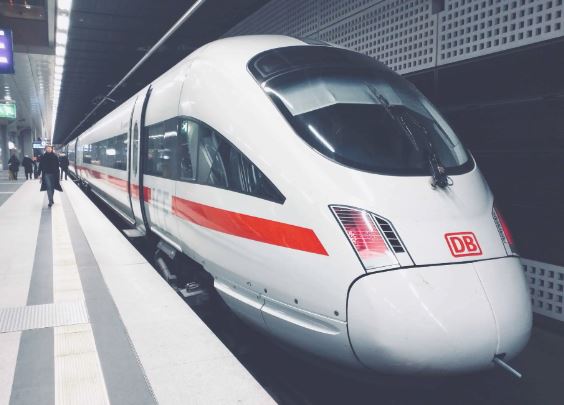
The first travel agency started thanks to a train trip.
A train excursion was organized in 1841 for a total of 540 parishioners to attend a temperance meeting in London. The organizer, Thomas Cook, negotiated a fare for passengers which included a meal with their tickets.
After the successful trip, he began to expand his operations within Europe and the United States. By 1873, this travel agency came to be known as Thomas Cook and Son.
Modern bullet trains can now travel more than 300 mph.
During the 1964 Tokyo Olympics, bullet trains were able to perform at a constant speed of 130 mph. Over the decades, the limit of these trains slowly increased, with the current world record of a train’s top speed being 357.2 mph.
Several other countries such as Germany, China, and France have also been slowly developing their train systems. Their trains are now also equally capable of performing at extreme speeds.
Train travel was made popular by Abraham Lincoln’s assassination.
In 1865 after the assassination of then-president Abraham Lincoln, a funeral train carried his body through 180 cities on its way to Lincoln’s home state.
This funeral train made front-page news and was later used as inspiration in establishing train travel around the world.
Trains aided in the victory of the Americans during the Civil War.
The battle of Chickamauga was one of the most significant uses of trains during the Civil War. The train used at this time quickly transported more than 20,000 backup soldiers across Washington D.C to Georgia in just a few days.
The quick arrival of these troops fortified the Union forces and was a crucial aspect of the military’s success.
The first American locomotive lost to a horse.
In 1830, an industrialist designed a steam engine called the “Tom Thumb” which was capable of going 18 mph. As it underwent tests near a railroad, a horse-drawn train pulled alongside it and was challenged to a race.
The Tom Thumb quickly strode ahead but later on broke a belt. This allowed the horse-drawn train to finish the race first.
Back when horses were used as a means of aiding transportation, James Watt developed a steam engine that was more efficient than any other engine being used at the time.
However, he had trouble selling such an engine because no one could understand its value. From this, he came up with a solution.
Watt invented Horsepower as a new power unit which would help him succeed in beating his competitors who owned older engines. This term was used because everyone from that time was aware of how much a horse was able to move.
Diesel trains weren’t used until the 1940s.
While steam engines developed throughout the 19th century, diesel trains were not put into use until the 1940s to the 1960s. These trains were preferred over steam engines because of their ability to perform faster for a much longer time.
Train travel from Europe to Asia is possible.
The longest train ride in the world is a trip originating from Portugal to Vietnam. This train trip is 10,056 miles long and takes approximately 12 days to complete.
The magnetic-levitation train is currently the fastest train in the world.
In April 2015, Japan broke its record for having the fastest train in the world. Japan Railways’ latest mag-lev bullet train traveled at a speed of 603 kph.
Mag-lev trains continue to aim for faster speeds.
It was reported by engineers that they have set a goal to increase the maximum speed a magnetic-levitation train can go. By the year 2020, these trains will be able to run at a speed of over 800 km/h.
The fastest commercial mag-lev train is found in China.
Shanghai, China holds the fastest commercial magnetic-levitation train in the world. This train can travel up to a maximum speed of 288 mph.







